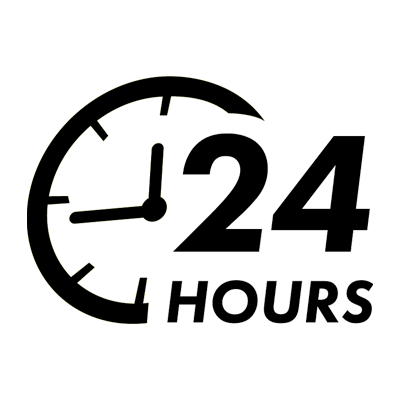In an industry that is rapidly embracing technology and sustainability, fleet operators must stay informed and compliant with the latest Department of Transportation (DOT) regulations.
This guide explores the most recent regulatory updates, their implications, and how operators can adapt to ensure compliance and maintain efficient operations.
Understanding DOT Regulations
The DOT plays a crucial role in ensuring safety and efficiency in the transportation sector, setting standards that affect commercial vehicles across the nation.
Recent amendments have focused on electronic logging devices (ELDs), hours of service, and enhanced safety measures, reflecting ongoing changes in technology and safety standards.
Key Regulatory Updates and Their Impacts
Hours of Service (HOS) Adjustments:
The Federal Motor Carrier Safety Administration (FMCSA), a division of the DOT, has recently revised the Hours of Service (HOS) rules to provide greater flexibility for drivers while maintaining high safety standards.
Key changes include:
Flexibility in the 30-minute break rule: Drivers can now take their required 30-minute break during an 8-hour driving window as an on-duty, not driving period, rather than strictly off-duty.
Sleeper berth provision: Modifications allow drivers to split their required 10 hours off duty into two periods: one at least 7 consecutive hours in the sleeper berth and another period of not less than 2 consecutive hours, either off duty or in the sleeper berth. Neither period counts against the driver’s 14-hour driving window.
Adverse driving conditions exception: Drivers can extend their driving window by up to two hours when encountering adverse driving conditions. This change aims to promote safety by allowing drivers to wait out bad weather or navigate through it slowly, without pressure to meet tight schedules.
These updates are intended to provide more discretion to drivers to rest when they feel tired, ultimately enhancing road safety and operational flexibility.
Updates on ELD Requirements:
Electronic Logging Devices (ELDs) have been mandated to ensure more accurate tracking and management of drivers’ records of duty status (RODS). The latest updates include:
Enhanced Technical Specifications: The updates demand higher precision in the ELD’s recording of time and location, ensuring that the data captured is both secure and accurate.
Data Transfer Requirements: To facilitate roadside inspections, ELDs must now be capable of transferring data in a standardized format to law enforcement in several prescribed ways, including wireless web services and email.
Strengthened Compliance Protocols: New regulations also outline requirements for manufacturers to certify their ELDs and for motor carriers to ensure devices remain compliant.
These regulations aim to eliminate the manual recording of duty status to reduce errors and prevent deliberate falsifications, thus improving compliance and safety.
Enhanced Safety Protocols:
The DOT has intensified safety protocols to reduce risks associated with drug and alcohol use in the transportation sector.
Significant updates include:
Clearinghouse Database: The FMCSA has established the Drug and Alcohol Clearinghouse, a national database that records all drug and alcohol program violations.
Employers must query the database to check current and prospective employees’ drug and alcohol violation history.
Stricter Testing Requirements: There are now increased random testing rates, and new protocols for testing following an accident have been instituted.
Return-to-Duty Process: Updated processes require drivers who fail or refuse drug and alcohol testing to complete a return-to-duty process, including direct observation testing and follow-up tests over the next 1 to 5 years.
These measures are designed to enhance safety on the roads by ensuring that drivers meet strict drug and alcohol standards, thereby reducing the likelihood of incidents related to substance abuse.
These regulatory updates underscore the DOT’s commitment to leveraging technological advancements and stringent safety measures to enhance transportation safety and compliance. They require diligent attention from fleet operators to ensure full compliance and to leverage the operational flexibility these regulations are designed to offer.
Strategies for Ensuring Compliance
Implementing Compliance Programs:
Effective compliance programs are crucial for adhering to DOT regulations and ensuring the safety and efficiency of fleet operations. Here are essential steps for setting up such programs:
Structured Training Programs: Develop comprehensive training programs that cover all aspects of DOT regulations, including HOS rules, ELD usage, and safety protocols.
Regular training ensures that all employees, especially new hires, are up-to-date with the latest regulations and operational practices.
Monitoring Systems: Implement systems to monitor compliance continuously. This can include telematics systems that track vehicle movements and driver behavior in real time.
Such systems help identify compliance issues promptly, allowing for immediate corrective actions.
Detailed Reporting: Establish a routine reporting system to document all compliance checks and violations. This should include maintenance records, driver logs, and incident reports.
A robust reporting system not only helps in internal audits but also prepares the fleet for external DOT inspections.
Utilizing Technology for Compliance:
Leveraging advanced software solutions can significantly enhance the ability to monitor and maintain compliance with DOT regulations:
Fleet Management Software: Use comprehensive fleet management software that integrates all compliance-related data, including driver hours, vehicle maintenance records, and compliance reporting. This software can automate many aspects of compliance, reducing the risk of human error and increasing operational efficiency.
ELD Integration: Ensure that electronic logging devices are fully integrated with other in-cab technologies. This integration can help streamline the data collection process, making it easier to monitor drivers’ HOS and ensure that they comply with regulations.
Real-Time Alerts: Utilize systems that provide real-time alerts for compliance breaches, such as HOS violations or missed vehicle inspections. These alerts can prompt immediate action, helping to address potential issues before they become more serious.
Regular Audits and Inspections:
Conducting internal audits and preparing for DOT inspections are critical for maintaining compliance and identifying areas for improvement:
Internal Audits: Schedule regular internal audits to review all compliance-related aspects of the fleet operations. These audits should check for adherence to DOT regulations, the accuracy of log entries, the condition of equipment, and the effectiveness of safety measures.
Preparation for DOT Inspections: Prepare for DOT inspections by ensuring all documentation is complete and easily accessible, vehicles are in good operating condition, and all drivers’ credentials are up-to-date. Regular mock inspections can also help prepare staff for the actual inspection processes.
Feedback and Continuous Improvement: Use the findings from audits and inspections to provide feedback to drivers and other staff members. Implement changes based on this feedback to continuously improve compliance practices.
These strategies help build a compliance-focused culture within the organization, ensuring that the fleet not only meets current regulatory standards but is also prepared for future changes in the regulatory landscape. Through training, technology, and thorough internal checks, fleet operators can effectively manage compliance risks and enhance overall operational safety and efficiency.
Navigating Audits and Penalties
Preparing for DOT Audits:
Effective preparation for Department of Transportation (DOT) audits is crucial for ensuring that fleet operations comply with regulatory standards and can significantly reduce the likelihood of penalties. Here are some practical tips for fleet operators:
Documentation Readiness: Ensure that all necessary documentation is accurate and readily accessible. This includes logs for driver hours, maintenance records, and compliance reports. Well-organized records can expedite the audit process and demonstrate compliance efforts.
Employee Training: Regular training sessions should be conducted for all employees, focusing on current DOT regulations and compliance requirements. This not only prepares your team for audits but also helps in cultivating a compliance-first culture within the organization.
Pre-Audit Checks: Conduct regular internal audits to identify and address compliance issues before they are flagged in an official audit. These checks should mimic the DOT audit process to ensure thorough preparation.
Dealing with Penalties:
Understanding how to effectively address and resolve penalties is crucial for minimizing their impact on operations. Here’s how to handle penalties:
Assessment and Response: When a penalty is issued, thoroughly assess the infraction and gather all relevant documentation and evidence that supports your case. If the penalty is unwarranted, prepare a detailed response challenging the fine.
Implementing Corrective Actions: For justified penalties, quickly implement corrective actions to address the root causes of the violations. This not only rectifies the issue but also demonstrates to regulatory bodies your commitment to compliance.
Documentation of Actions: Document all steps taken to correct violations and improve compliance. This documentation will be valuable in future audits and can help mitigate the severity of penalties.
Future Trends in DOT Regulations
Anticipated Changes:
The DOT regulations are expected to evolve in response to technological advancements and new industry practices. Some predicted areas of focus include:
Autonomous Vehicles: Regulations will likely be introduced or adapted to address the unique challenges posed by autonomous vehicles in commercial operations, including safety standards and liability issues.
Electric Trucks: With the rise of electric vehicles, new regulations may emerge concerning battery safety, charging infrastructure, and environmental impact assessments.
Staying Informed:
Staying current with regulatory changes is critical for maintaining compliance and leveraging competitive advantages. Here are effective strategies for staying informed:
Subscribe to Newsletters and Alerts: Regular subscriptions to industry newsletters, DOT updates, and regulatory alerts can provide timely information on regulatory changes and compliance guidelines.
Attend Industry Conferences and Workshops: These events are valuable for gaining insights from experts, networking with peers, and learning about forthcoming regulatory changes directly from policymakers.
Engage with Professional Associations: Membership in relevant professional associations can provide additional resources, including access to specialized training and advocacy efforts related to regulatory changes.
By effectively preparing for audits, efficiently handling penalties, and staying abreast of regulatory trends, fleet operators can ensure continuous compliance and operational success in a dynamically regulated environment.
Remaining compliant with DOT regulations is crucial not only for legal adherence but also for ensuring the safety of operations and minimizing risks.
By being proactive and well-informed, fleet operators can effectively navigate the regulatory landscape.
Stay compliant and ensure the safety and efficiency of your fleet with our expert roadside assistance services.
Whether you need regular maintenance checks, emergency services, or guidance on DOT regulations, our team is here to support you 24/7.
Don’t let compliance issues slow you down.
Contact us today for reliable, professional roadside assistance that keeps you moving.
Visit our website or call us to learn more about how we can assist your fleet operations.
















